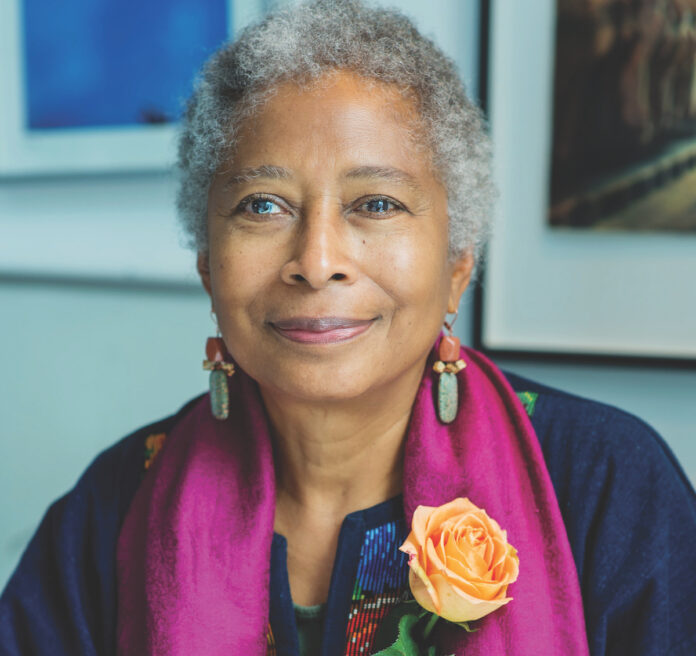I remember the days when almost every woman I knew in northern California poured over Alice Walker’s new age novel about women who love other women, and wore something purple.
Some were even inspired to come out as lesbians.
Walker has continued to write and publish ever since The Color Purple won the Pulitzer Prize for fiction in 1982. Stephen Speilberg turned it into a movie and gave Walker international star power.
When I was teaching American literature in Europe in the mid-1980s, students wanted to know all about her. They would have benefited greatly by the journals she kept from 1965 to 2000 that have just been published under the title Gathering Blossoms Under Fire: The Journals of Alice Walker, 1965–2000 (Simon & Schuster; $32.50). They have been edited, though nothing significant seems to have been omitted.
Walker writes about her Jewish, civil rights lawyer husband Mel, her Black lovers, including the historian Robert Allen, and the singer/songwriter Tracy Chapman, plus her fractious relationship with her daughter, Rebecca Walker, an author in her own right.
In Gathering, readers have the opportunity to see Alice up close and personal, though they won’t know everything about her, up to the last minute. The book stops in 2000.
I’ve never met Walker, but I heard her deliver an inspiring speech to seniors at Mendocino High School, where she said, “Walk alone, be an outcast.” I also interviewed her by phone soon after U.S. troops went into Afghanistan. “We have all been called to awaken right now,” she told me, and helped to fuel the current woke phenomenon.
These days, Black women writers are all over best seller lists. Walker was one of the first to break out of the literary ghetto and appeal to both white and Black people. To do that, she worked exceedingly hard promoting herself. Not surprisingly, she writes in Gathering, “I want a year of not being Alice Walker.” In another journal entry from around the same time, she asks, “Why do I keep on trying to figure out what’s wrong with me?”
What seems to have made her relatively happy and even content with her lot in life, has been her time among back-to-the-landers. As she explained during the interview I conducted with her: “It’s so peaceful and rural, and I like my neighbors who are regular people. Mendocino County is a wonderful place to grow a garden and an idyllic place to write. In Boonville, I wrote The Color Purple.”
She added, “The Mendocino County I know and love is similar to the countryside in Georgia where I grew up.”
Still, it’s curious that a woman from a poor Black sharecropping family found herself in northern California, far from any big city literary marketplace. Predictably, Walker has never been entirely happy in Mendo. In Gathering, she writes about her weary, world-wide travels, the many expensive properties she buys in California and New York, and her “house complex.” I applaud her candor and her willingness to reveal her flaws, contradictions and frustrations with friends and lovers. “The nomadic life has got to stop,” she writes. Read Blossoms to find out if she has slowed down. Become a voyeur or pretend you’re reading a long gossip column in which the columnist strips herself naked—almost.











